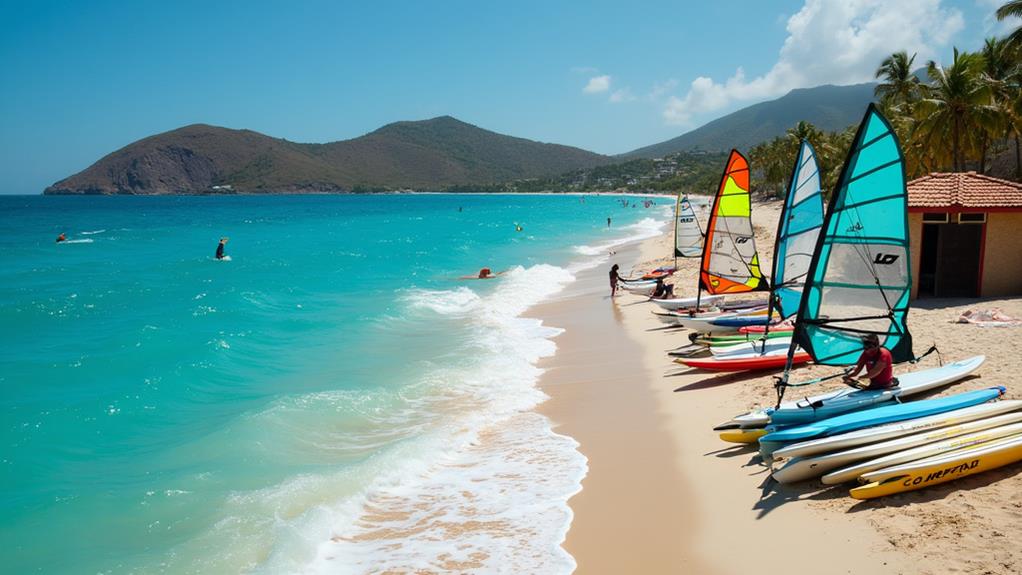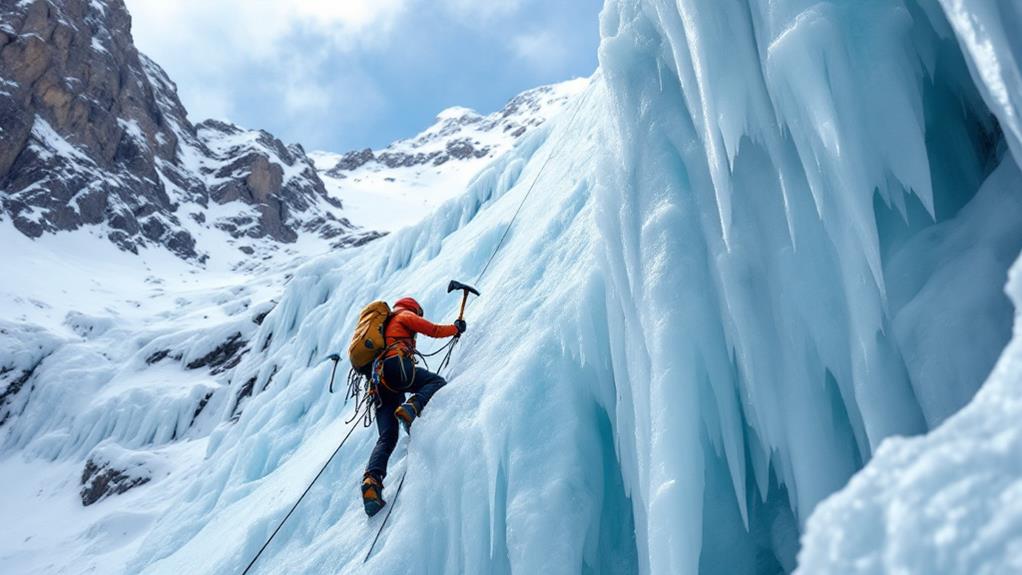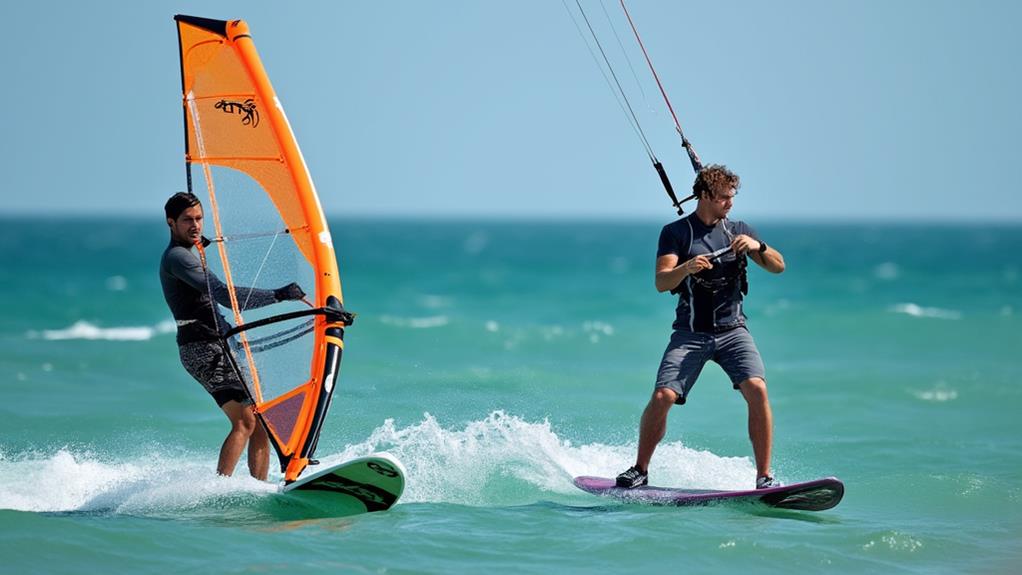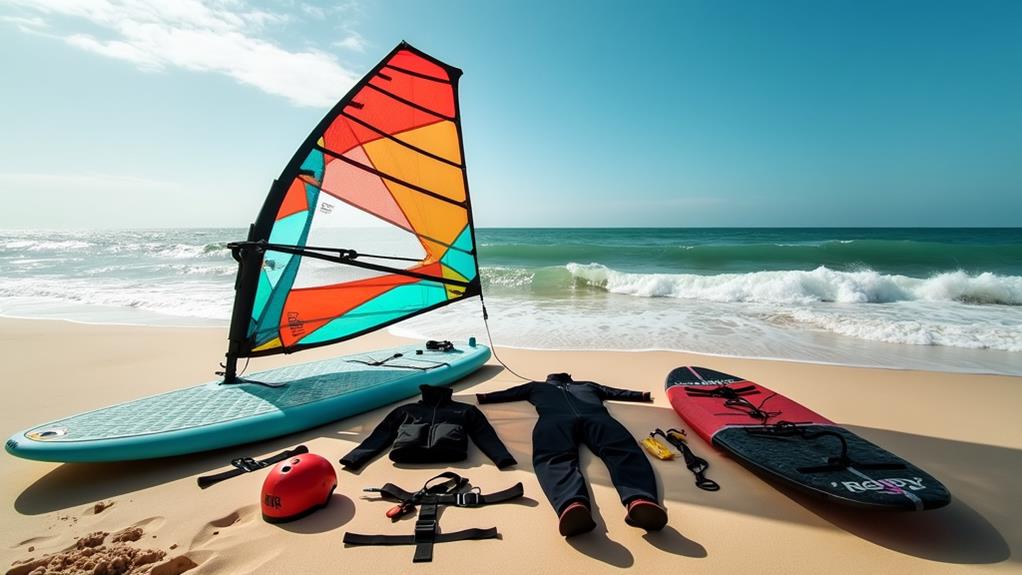Is Windsurfing an Expensive Sport?

Windsurfing can initially appear costly, with lessons ranging from $70 to $140 per day and boards priced between $750 to $2,900. Equipment prices have surged by 80-100% over the past two decades, making the sport seem less accessible. However, affordable options like rentals and second-hand gear can significantly reduce costs. So, is windsurfing truly an expensive sport, or can you enjoy it affordably? Let's explore these alternatives and see how you can get started without breaking the bank.
Cost of Lessons
When starting out in windsurfing, one of the main expenses you'll face is the cost of lessons. The sport can seem daunting initially, especially when considering the associated costs. For beginners, daily lessons typically range from $70 to $140, usually including windsurfing equipment rental. For those looking for a brief introduction, short two-hour courses are available for $70 to $95 but offer limited water time.
For a more immersive experience, two-day group lessons are popular, costing around $165 to $200. These sessions provide a better opportunity to learn the basics and get comfortable on the water. If you prefer personalized instruction, private lessons are available, priced between $50 and $90 per hour, though these generally do not include gear rental, so you may need to budget extra for that.
While windsurfing can seem expensive due to these initial costs, investing in quality instruction can make your learning curve smoother and your time on the water more enjoyable.
Day Camps and Training
Windsurfing day camps offer an excellent opportunity for beginners to immerse themselves in the sport without committing to long-term programs. These camps generally cost between $300 and $400 for three days of training, which includes both instruction and gear rental. For those seeking a more comprehensive experience, a four-day camp costing around $500 features video analysis to help you fine-tune your skills.
Day camps emphasize consecutive training days, facilitating the mastery of essential skills such as sailing out, turning, and understanding safety protocols. For children aged 7-12, specialized kids' day camps are available, costing between $90 per day and $150 for two days. These camps are tailored to ensure a fun and educational experience for younger participants.
For those with limited time or budget, short two-hour courses are available for $70 to $95. While these shorter sessions offer less water time, they still provide a solid introduction to windsurfing. Overall, windsurfing day camps offer a structured and cost-effective way to begin the sport, covering both training and equipment needs.
Rental Costs

While day camps offer a structured introduction to windsurfing, rental costs are an important factor for newcomers to consider. Renting equipment can be a cost-effective option, especially for beginners. Beginner gear typically costs around $35 for two hours and $55 for four hours, making it an affordable way to try out the sport.
For those who progress to intermediate levels, rental costs rise to $50 for two hours and $80 for four hours. Additionally, harness rental costs $10. Wetsuit rentals, essential for staying comfortable, range from $10 to $15 and are suitable for all skill levels. This allows you to stay warm and focused without making a significant initial investment.
Renting is often recommended for beginners as it allows gradual skill development without the immediate need to purchase personal gear. Overall, rental costs offer a budget-friendly way to experience windsurfing. This approach lets you explore the sport and determine if you're ready for a more substantial investment.
Purchasing Equipment
Investing in your own windsurfing equipment can enhance your experience and offer long-term savings. While initial costs may seem high, owning your gear eliminates rental fees and allows for more frequent practice. Windsurf boards range from $750 to $2,900, with beginner options starting around $800. For novices, purchasing second-hand equipment can be a cost-effective choice, as it is more affordable and beginners often put more wear and tear on their gear.
In addition to the board, you will need supplementary gear. Sails range from $300 to $900, so choose one that matches your skill level. Full-body wetsuits, essential for most climates, range from $120 to $450, with prices varying based on thickness and brand. Safety gear, such as helmets ($100-$170) and harnesses ($90-$150), is crucial and should not be overlooked.
Discounts and Resources

Saving on windsurfing can be significantly easier by leveraging discounts and accessing the right resources. Many windsurfing schools offer discounts for purchasing multiple lessons, which can save you between $25 and $80, making the sport more accessible. Additionally, if you have previous lesson experience, you might be eligible for equipment discounts, potentially saving around $200.
To find valuable resources, follow these steps:
- Utilize US Sailing's Directory: This comprehensive list helps you locate local schools and qualified instructors.
- Check the Better Business Bureau: Verify the credibility and quality of businesses you're considering.
- Research Local Safety Regulations: Familiarize yourself with local risks and rules to enhance your windsurfing experience.
- Join Windsurfing Forums and Groups: These communities often share useful discounts and gear recommendations.
Cost Comparison: Windsurfing Vs. Winging
After exploring ways to save on windsurfing through discounts and resources, it's important to evaluate the total costs of windsurfing compared to winging. If you're considering a new winging setup, expect to spend around €1,500. This includes the wing, board, and foil, making it a more affordable option than comparable windsurfing equipment. In contrast, entry-level windsurfing boards start at approximately €1,450, with high-performance models exceeding €2,500, indicating a heftier investment for serious windsurfing enthusiasts.
Second-hand windsurfing boards, once available for around €1,000, now hover closer to €1,300. This price increase is partly due to the rising popularity of winging, which has shifted some demand away from windsurfing. Interestingly, the increased interest in winging has led to a noticeable decrease in second-hand windsurfing gear prices, suggesting potential market oversaturation for windsurfing boards.
Additionally, winging boards are generally lighter and often more affordable than windsurfing boards. Entry-level windsurfing gear has seen an 80-100% price increase over the last two decades, making winging a more cost-effective way to enjoy water sports. Therefore, when considering the financial aspects, winging might be the less expensive route.
Market Dynamics and Pricing Issues

Over the past two decades, the windsurfing market has faced significant challenges, primarily due to a limited consumer base and rising costs. These market dynamics have led to price increases of 80-100%, making windsurfing gear less accessible for many enthusiasts. Distributors are often criticized for raising costs without adding value, exacerbating pricing issues. However, brands like Gong have demonstrated that lower prices are achievable through an online sales model.
High depreciation rates for new windsurfing gear, with some equipment losing up to 70% of its value in just two years, significantly influence consumer purchasing behavior. The rise of winging—a popular alternative—has also impacted windsurfing market dynamics, causing a drop in second-hand windsurf gear prices. This shift highlights changing consumer interests and creates more affordable options for newcomers.
Here's a snapshot of the current market scenario:
- Price Increases: Windsurf gear prices have surged by 80-100% over the past 20 years.
- Depreciation: New equipment can lose up to 70% of its value in two years.
- Distributor Practices: Distributors are perceived as inflating prices without adding value.
- Market Shift: Increased popularity of winging has lowered second-hand windsurf gear prices.
Equipment Evolution and Performance
Despite the rapid evolution in winging equipment, windsurfing gear has largely reached a mature stage with minimal annual improvements in performance. The performance gap between older and newer windsurfing boards is minimal, particularly for recreational users. This means you don't need the latest model to enjoy the sport fully.
Entry-level windsurfing gear is often perceived as physically demanding and complex. However, smaller sails and boards can make the sport more accessible and enjoyable. Unlike winging, where issues like laminate rail cracks and bladder leaks are common, windsurfing equipment is generally more reliable.
The cost of high-performance windsurfing gear has escalated, with new windsurfing and windfoiling boards priced around €3000, reflecting a shift in the industry's market dynamics. While new equipment might offer slight improvements, the mature stage of windsurfing gear means older models still perform well. The reliability and enduring performance of established gear remain strong selling points, even if the evolution in windsurfing equipment isn't as rapid as in winging.




